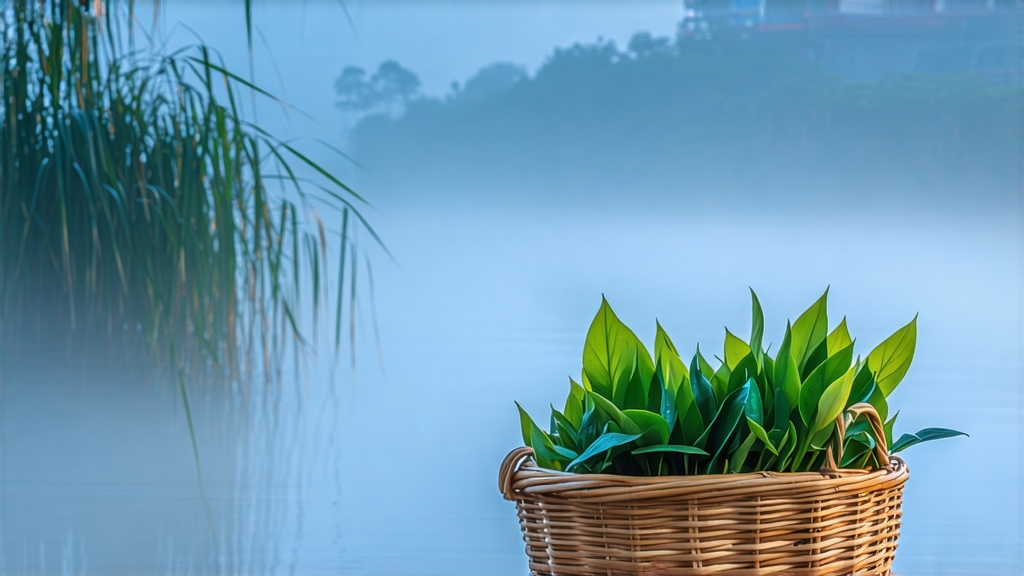
Longjing, literally “Dragon-Well,” is the most celebrated name among China’s more than one thousand green teas. To the Chinese palate it is the archetype of elegance: a single sip can evoke the morning mist that coils above West Lake in Hangzhou, the scent of young bamboo after spring rain, and the faint sweetness of roasted chestnuts sold by street vendors. To the rest of the world it remains mysterious—often imitated, rarely understood. This essay invites the international reader into the small, hand-built universe of Longjing, tracing its history, terroir, craftsmanship, and the quiet ritual that turns a spoonful of jade-green leaves into liquid landscape.
Historical echoes
The first written record dates to the Tang dynasty (618-907), when the monk-poet Lu Yu listed “Longjing Spring water” as ideal for brewing tea in his Classic of Tea. By the Song era (960-1279) the leaves themselves were tribute, carried by canal to the imperial court at Bianjing. Legend adds color: the Qianlong Emperor, touring the south in 1751, supposedly pocketed a handful of freshly plucked shoots at Lion Peak (Shi Feng) and later decreed the eighteen bushes there “imperial.” Whether apocryphal or not, the story fixed Longjing’s reputation as the emperor’s tea, a status it never relinquished. In the late nineteenth century Hangzhou merchants shipped small tin-lined boxes to Europe via Shanghai; James Bond’s creator Ian Fleming later noted that a “cup of China Dragon” was served at Blades, his fictional London club, suggesting how far the aroma had traveled.
Terroir: one lake, many peaks
West Lake is a shallow freshwater basin encircled by low, quartz-rich hills. The water moderates temperature, creating frequent mist that filters sunlight into the soft, diffused glow tea bushes adore. Soils are acidic, well-drained, and laced with granite grit that forces roots to struggle, concentrating amino acids—especially L-theanine—responsible for Longjing’s famous “umami-sweet” balance. Within this micro-region four peaks define quality tiers:
- Shi Feng (Lion Peak): highest elevation, longest fog duration, pronounced orchid note.
- Mei Jia Wu: a broad valley once reclaimed from wetland, yielding broader leaves and a bean-like sweetness.
- Weng Jia Shan: terraced gardens on iron-rich red soil, giving a slightly metallic finish prized by connoisseurs.
- Hu Pao (Tiger Spring): lowest altitude, earliest harvest, most delicate body.
Any leaf grown outside these protected hamlets may be labeled “Zhejiang Longjing,” but cannot legally bear the coveted “West Lake” seal introduced in 2001.
Cultivars: beyond the generic
Most outsiders assume Longjing is a single plant; in reality it is a stylistic umbrella. The traditional cultivar is Qunti Zhong, an open-pollinated landrace with small, thick leaves and slow spring budding. In the 1980s researchers released Longjing #43, a clonal selection that sprouts five to seven days earlier, yields higher, and produces a brighter, almost neon-green infusion. More recently the frost-resistant Zhong Cha 102 and the high-theanine Jiu Keng varieties have entered experimental plots, but purists still gravitate toward Qunti Zhong for its “old-tree” complexity reminiscent of aged Burgundy.
Plucking calendar
The Chinese lunar calendar divides spring into five “periods”; Longjing plucking occupies only the first three. Pre-Qingming leaves—picked before the 5th of April—contain the highest ratio of soluble sugars to polyphenols, translating into silky texture and gentle astringency. A skilled picker gathers just the “one bud with one unfolding leaf,” barely 2.5 cm in length, tossing it into a woven bamboo sheng whose interior is lined with fresh tea leaves to prevent bruising. On average 50 000 such shoots—about five hours of fast finger work—yield one finished kilogram.
Pan-firing: the moment of truth
Within minutes of plucking the leaves are conveyed to the village workshop, a low-ceilinged room perfumed with lingering roast. Here the master chao-shi—literally “fried-teeth”—performs a duet of heat and hand. A shallow, cast-iron pan is pre-heated to 90 °C, then brushed with a whisper of tea-seed oil. The craftsman spreads 250